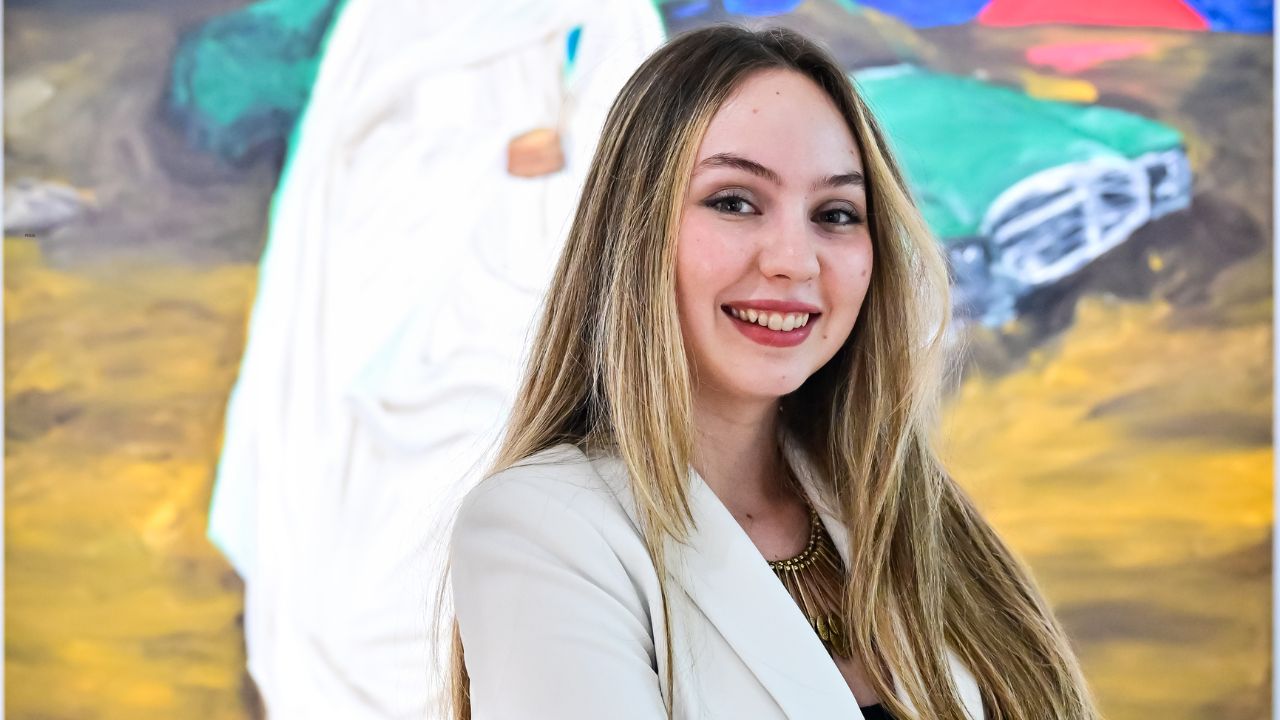
Anita Shishani explores diaspora, memory, and cultural identity in the thought-provoking exhibition Bygones
At The Project Space at NYU Abu Dhabi, a deeply moving exhibition titled Bygones is offering a powerful exploration of diaspora, memory, and the fragile nature of cultural identity.
Curated by Anita Shishani, an artist of Chechen heritage raised in Abu Dhabi and Jordan, the exhibition is more than just an artistic showcase – it is an emotional and intellectual journey through the struggles, resilience, and longing of displaced communities.
Sitting down with Shishani, it becomes clear that Bygones is as much a personal project as it is a communal one.
For her, the concept of home has always been layered, complicated, and, at times, painful. “I have never really known Chechnya,” she admits, “not in the way my grandparents did. And yet, it has shaped me completely.”
This paradox—to belong to a place you have never truly inhabited—lies at the heart of the exhibition.
Through the works of 14 artists from various diaspora backgrounds, Bygones examines what happens when a homeland is forcibly taken away, reshaped by war, colonization, and exile.
“We think of home as something fixed, but for many of us, it’s a moving target,” Shishani reflects. “It exists in memory, in rituals passed down, in objects and language—but physically, it can be unreachable or even erased.”
Chechen identity in the shadow of history
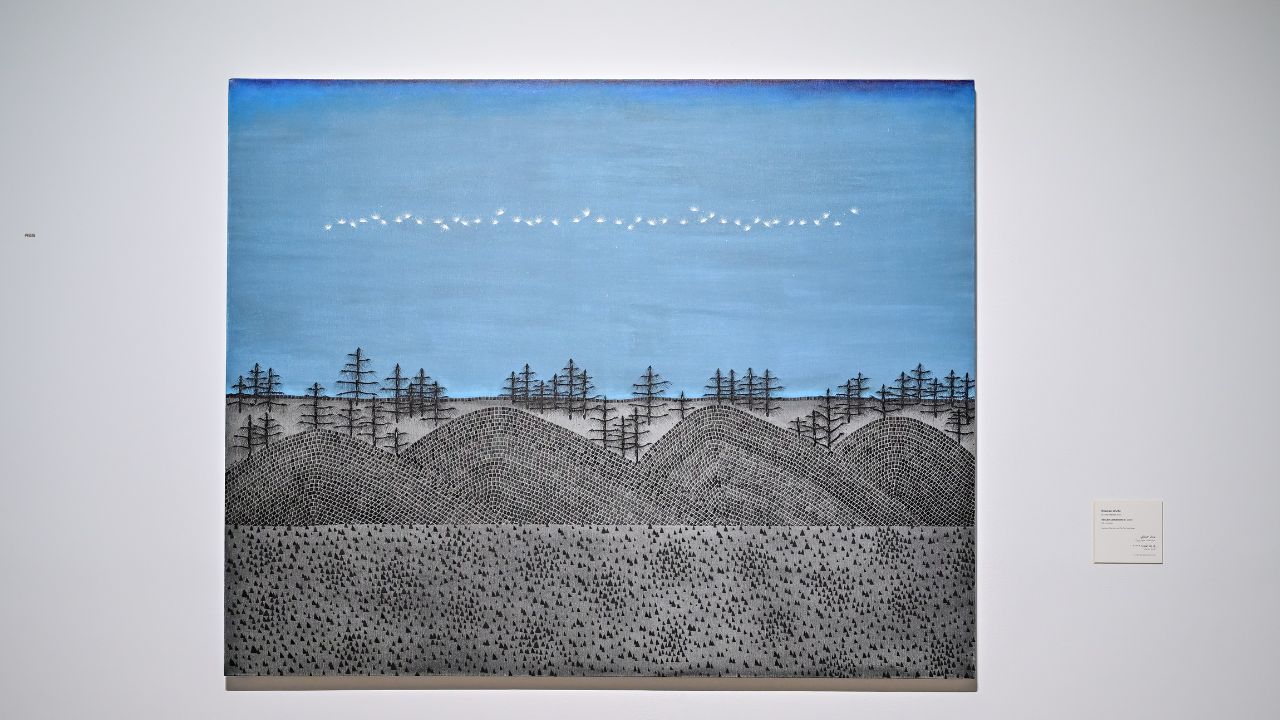
Born into a Chechen family that found refuge in the UAE and Jordan, Shishani grew up with a strong sense of cultural identity, despite never having lived in her ancestral homeland.
Chechnya’s history is one marked by occupation, war, and forced displacement, and much of its traditional architecture, language, and customs have been systematically erased.
“History has been erased. The language is dying. What remains is what we carry with us.”
And yet, she refuses to frame her culture solely in terms of loss. Instead, Bygones celebrates the endurance of identity in exile. The exhibition highlights not just the grief of displacement, but the ways in which diasporic communities adapt, reinvent, and hold onto their heritage—through storytelling, ritual, and of course, art.
The power of art in holding onto memory
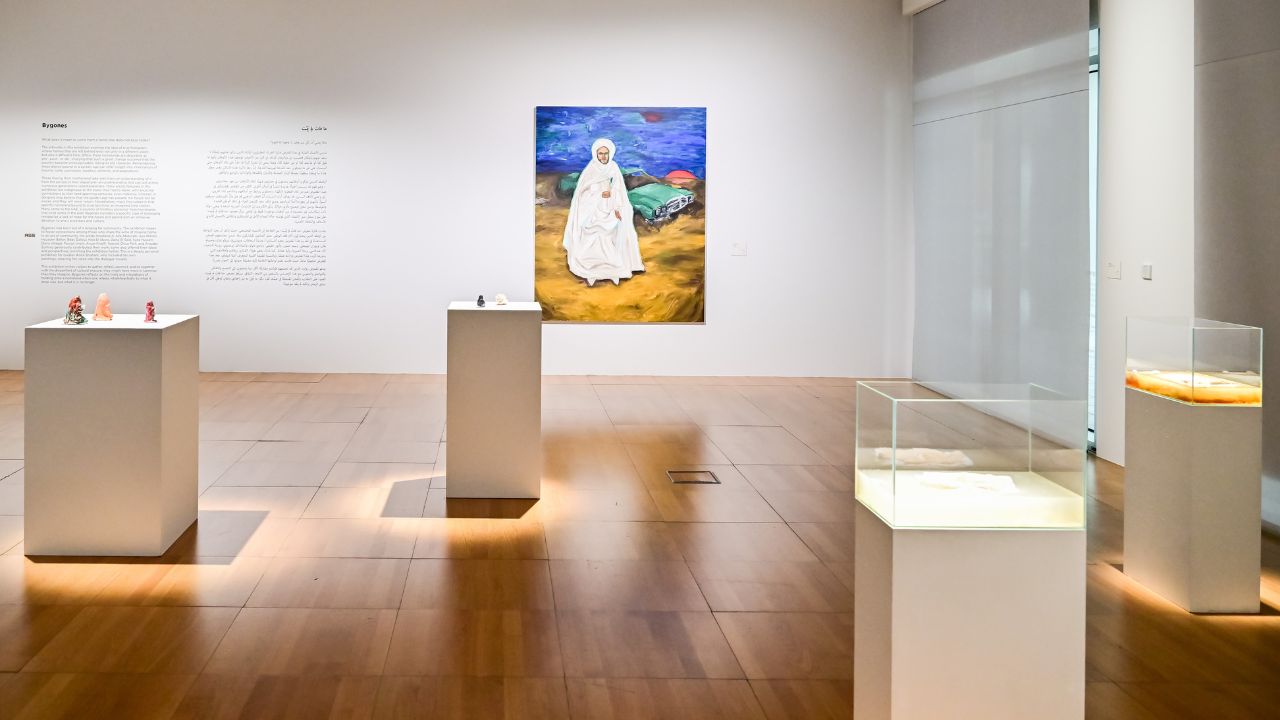
In curating Bygones, Shishani sought out artists whose work speaks to the themes of belonging, nostalgia, and resilience. The exhibition features pieces by Anastasia A, Alla Abdunabi, Aya Afaneh, Houssam Ballan, Bady Dalloul, Hala El Abora, Zaina El-Said, Syed Hussain, Diana Ishaqat, Pouran Jinchi, Anuar Khalifi, Yoonsik Chico Park, and Ansadat Zumsoy—each bringing a unique lens to the shared experience of displacement.
“What’s fascinating is how different cultures express this longing,” Shishani notes. “For some, it’s in preserving old symbols—like the pagan and religious motifs you see in some of the works. For others, it’s in depicting the absurdity of so-called “civilized” societies, questioning class, authority, and imposed identities.” She points out that in Chechen history, there is no royalty or structured class hierarchy.
Decisions are made around round tables, a custom rooted in egalitarianism rather than authoritarian rule.
“It’s completely opposite to the rigid class systems in places with an imperialist past,” she observes, drawing parallels to the subtle but deeply ingrained hierarchies that exist in Western societies.
Shishani’s own contribution to the exhibition reflects this contrast between the past and present, the known and the imagined. Her paintings, deeply personal yet universal in their themes, depict figures who exist in a liminal space—neither fully here nor there, caught between memory and reality.
Diaspora, art, and the fight against cultural erasure
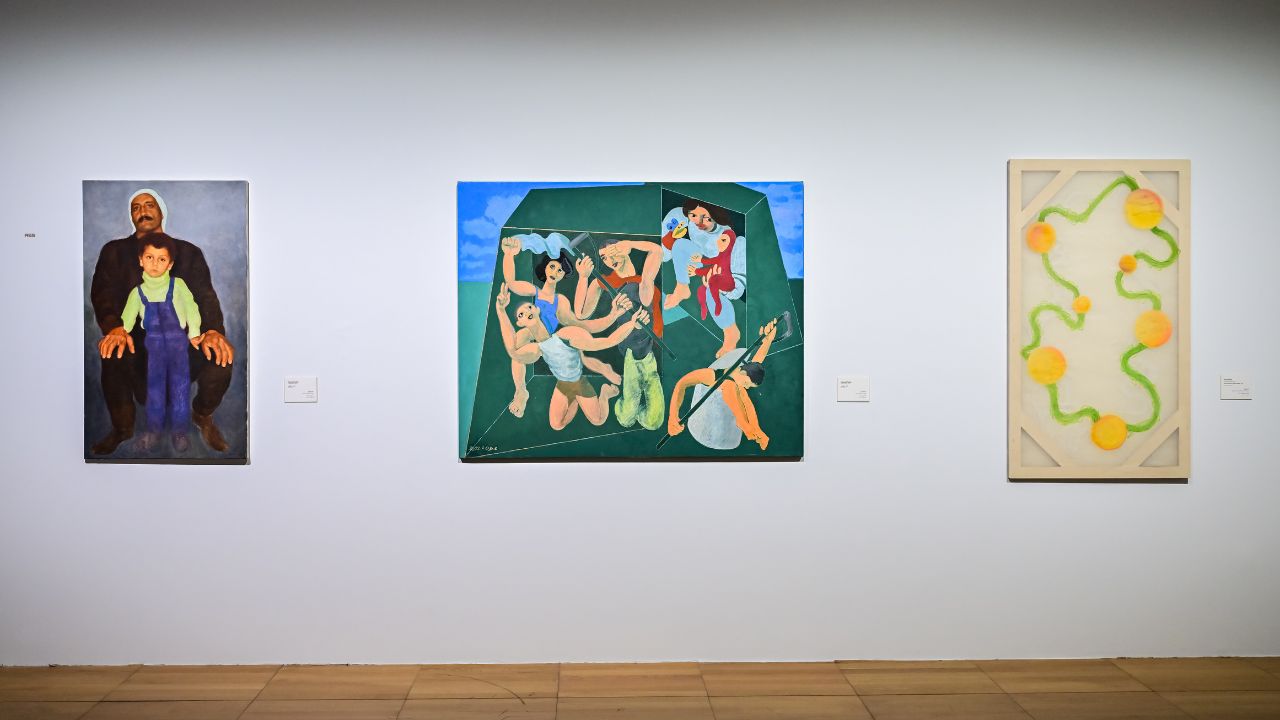
Throughout our conversation, Shishani repeatedly emphasizes the urgency of preserving cultural identity in the face of globalisation.
While exile has always been a part of history, modernity has brought new challenges. “We’re seeing younger generations lose their languages, their customs,” she says. “Not out of choice, but because survival sometimes requires assimilation.”
And yet, she remains hopeful. Bygones is not just about mourning what is lost but about finding new ways to carry traditions forward.
“Diaspora is not just about being displaced,” she explains. “It’s about adaptation, about learning to exist in multiple worlds at once.”
She acknowledges that the exhibition does not seek to offer easy answers. Rather, it invites viewers to reflect, to question, and to connect.
One of the public programs accompanying the show, a writing workshop titled ‘How to Return as if You Never L , encapsulates this paradox perfectly. “How do you return to a place that no longer exists? Or to one that exists only in your family’s stories?” she asks. “These are the questions we carry with us.”
A living exhibition: public programs and community engagement
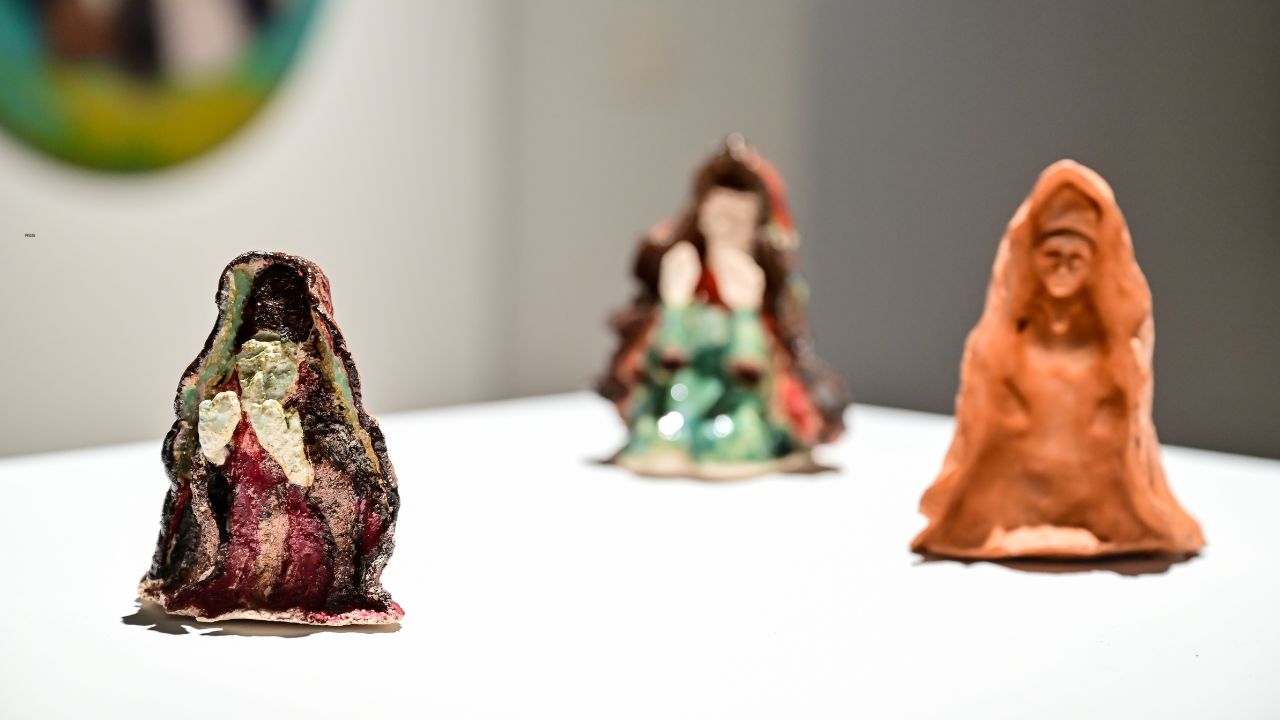
More than just an art show, Bygones extends into a series of public talks, workshops, and lectures, all designed to foster deeper engagement with the themes of identity, displacement, and cultural memory.
WHY BYGONES MATTERS NOW
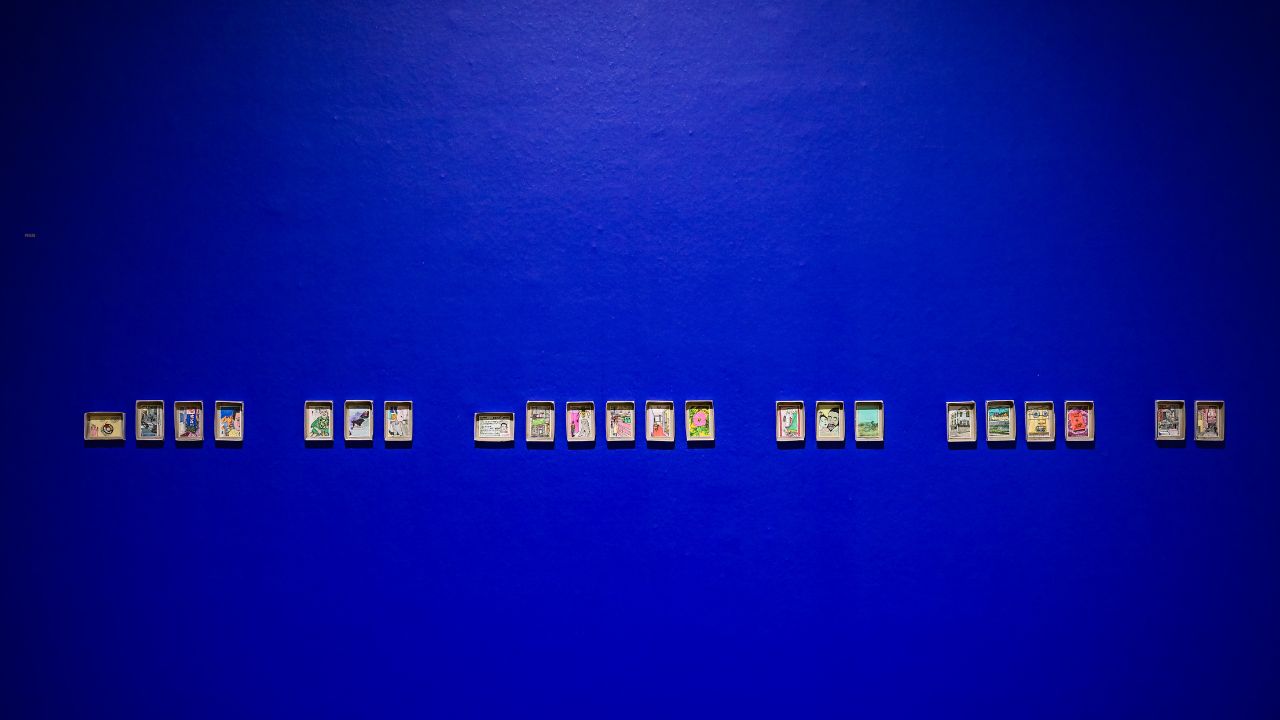
At a time when global displacement is at record highs, Bygones offers a deeply personal but universally relevant meditation on home, identity, and memory.
It reminds us that diaspora is not just a historical phenomenon—it is a lived reality for millions.
For those who have never experienced displacement, the exhibition offers a window into the emotional weight of exile. For those who have, it provides a sense of recognition, of solidarity, and of belonging.
Shishani hopes that visitors leave not with answers, but with a newfound appreciation for the resilience of culture in the face of erasure.
“Home is not just a place,” she says. “It’s a feeling. A story. A piece of art that holds onto something that history tried to take away.”
Free. Until 11 February. The Project Space at NYU Abu Dhabi. Open Tuesday to Sunday, 12 pm to 8 pm. For more information, visit nyuad-artgallery.org
Follow Yalla for all the arts & culture news

